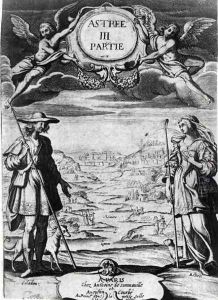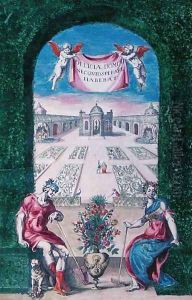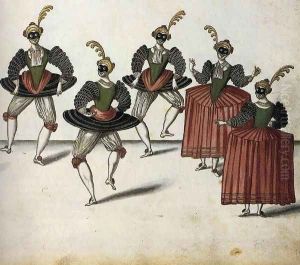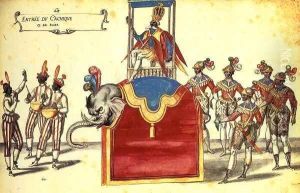Daniel Rabel Paintings
Daniel Rabel was a multifaceted French artist, born in 1578 in Paris, France, and died in 1637. His contributions spanned various disciplines, including painting, engraving, botany, and costume design, showcasing his diverse talents and interests. Rabel's work is especially notable for its detail, precision, and creativity, characteristics that have cemented his place in the history of art and science.
Rabel's early life and education are not extensively documented, but it is known that he was active in Paris and later in other parts of France. He came from a family with artistic interests; his father, Jean Rabel, was also an artist, which likely provided Daniel with an environment conducive to nurturing his talents from a young age. Throughout his career, Rabel was deeply involved in the cultural and scientific communities of his time, contributing to the burgeoning interest in natural history and botanical illustration that characterized the early 17th century.
One of Rabel's most significant contributions was to the field of botanical illustration. He was appointed as the court botanist and painter to King Louis XIII of France, a position that afforded him the opportunity to study and document plant life with an unprecedented level of detail and accuracy. His botanical illustrations were not only works of art but also scientific documents that helped lay the groundwork for future botanical studies. His drawings are celebrated for their intricate detail, vivid colors, and the precision with which they depict the plants' characteristics.
In addition to his botanical work, Rabel was also renowned for his costume designs, particularly those for the ballets and theatrical productions at the French court. His designs were innovative and extravagant, reflecting the opulent style of the period. These works provide valuable insights into the cultural and social contexts of 17th-century France, including the fashions, aesthetics, and ceremonial practices of the time.
Rabel's legacy is preserved in various collections and museums around the world. His botanical illustrations remain important historical documents, appreciated both for their artistic beauty and their scientific value. Meanwhile, his contributions to costume design continue to be studied by historians and designers alike, offering inspiration and insight into the elaborate world of French court entertainment. Despite the passage of centuries, Daniel Rabel's work continues to captivate and inform, testament to his enduring influence on the worlds of art, science, and history.



